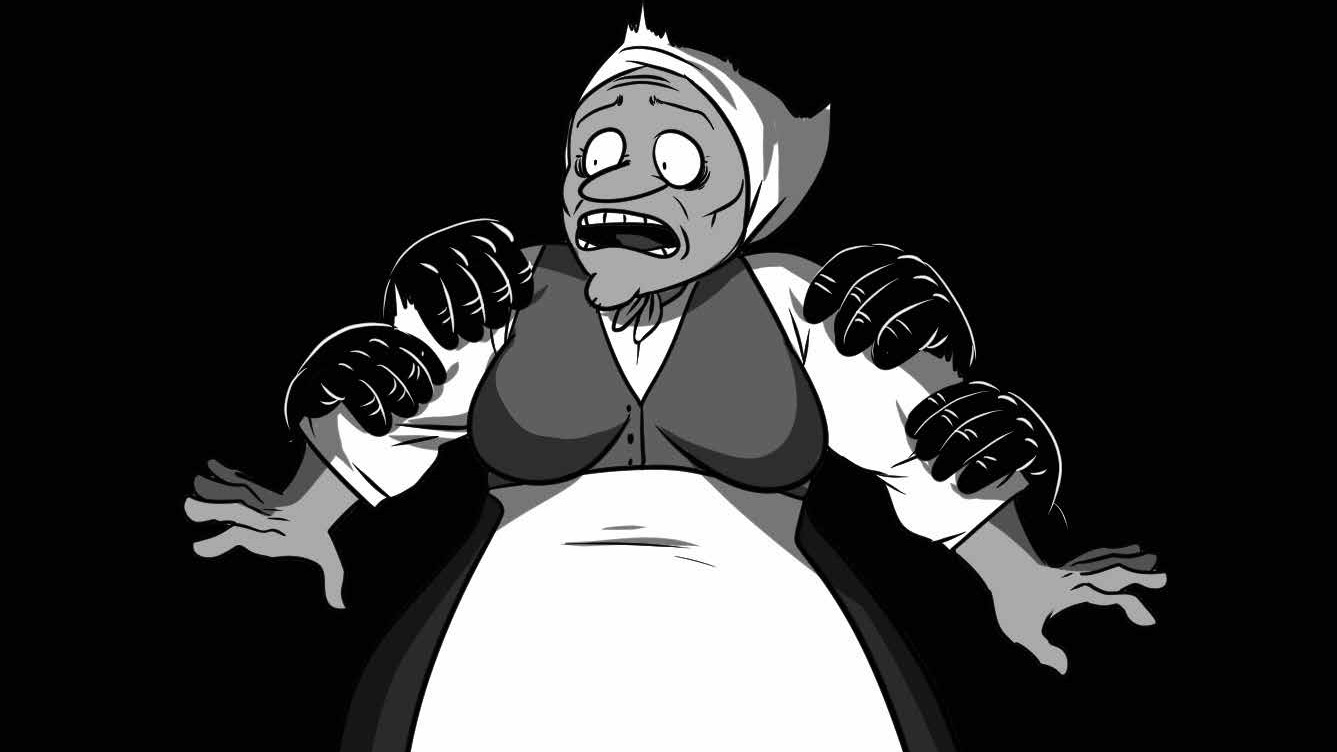One of the cursed periods on the border was the occupation during the ‘Lesser Wrath’ (1742-1743). At that time, the border region left on the Russian side was severely punished, with 15 houses burned to the ground also in Miettilä. Just one was left standing, albeit pillaged and wrecked. The nearby Ämpääntie road (today Karkeikontie road to Ämpää) is said to have got its name when the Russians or Cossacks murdered an old woman [ämmä] there. The corpse was thrown in a ravine and the head left on the road, or the woman was first buried alive and later decapitated, and the head thrown in the ravine.
The old hag is agitated again, scurrying along, her skirt hem sweeping the sandy road. The hag’s curses and shrieks mingle with the tweeting of birds at their evensong. Village houses are burning again, and the roaring flames are reflected in the old woman’s eyes. Miettilä’s houses are on fire! The hag hurries to safety, but is caught, like on previous occasions.
The men are the same ones as always. Black, swarthy eyes watch the old woman’s powerless struggling. Her white, wispy hair whips around, and the hag’s mouth spews out terrible curses. She does not beg for mercy, she won’t grant them that. Let it be as it is written. Soon the age-withered body is flung into a pit and earth shovelled over it. The furious head, hacked from the body, is like a ball on the moonlit road.
As the tale is written: The hag’s head was chopped off and the corpse was later found in a nearby ravine. This is how Ämpääntie (Hag Road) got its name.
Text: Pekka Vartiainen
Picture: Anni Jokitalo
Transl. Annira Silver
Location on map
The story and the pictures are a part of Tarinajoki book (River of Stories), made in Rural Explorer project. As part of a culture tourism project, stories arising from the body of folk narratives and history also have a function in relation to the productisation of tourism. The stories are linked to real locations.
